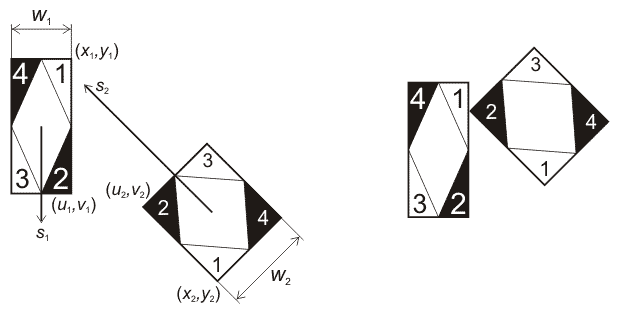当前你的浏览器版本过低,网站已在兼容模式下运行,兼容模式仅提供最小功能支持,网站样式可能显示不正常。
请尽快升级浏览器以体验网站在线编辑、在线运行等功能。
3433:Road Accident
题目描述
Two cars crashed on the road, receiving some damage each, and raising the usual question: "Who to blame?". To answer this, it is essential to thoroughly reconstruct the sequence of events. By gathering witness testimonies and analyzing tire tracks, positions and speeds of cars just before the impact were determined. From these positions until the crash the cars moved straight forward.

Your program must, given the available data, calculate for each car what part of it first came into contact with the other car. Parts are numbered as shown on the picture.
输入解释
Input file contains twelve floating point numbers: x1 y1 u1 v1 w1 s1 x2 y2 u2 v2 w2 s2, where (x, y) and (u, v) — coordinates of back-left and forward-left corners of the car, w — width of the car, s — speed of the car.
Constraints
1 ≤ xi, yi, ui, vi, wi ≤ 106, 0 ≤ si ≤ 106. Input data is such that a crash certainly happens. Initially cars don't have common points.
输出解释
Output file must contain two integers: p1 p2, where p — number of part which first contacted the other one (if two parts came into contact simultaneously, output the lesser of the part numbers),
输入样例
Sample input 1 1.0 2.0 10.0 2.0 1.0 10.0 50.0 1.0 40.0 1.0 1.0 20.0 Sample input 2 1 1 10 1 1 20 40 1 50 1 1 10
输出样例
Sample output 1 2 2 Sample output 2 2 1
提示
最后修改于 2020-10-29T07:01:29+00:00 由爬虫自动更新
共提交 0 次
通过率 --%
| 时间上限 | 内存上限 |
| 1000 | 65536 |